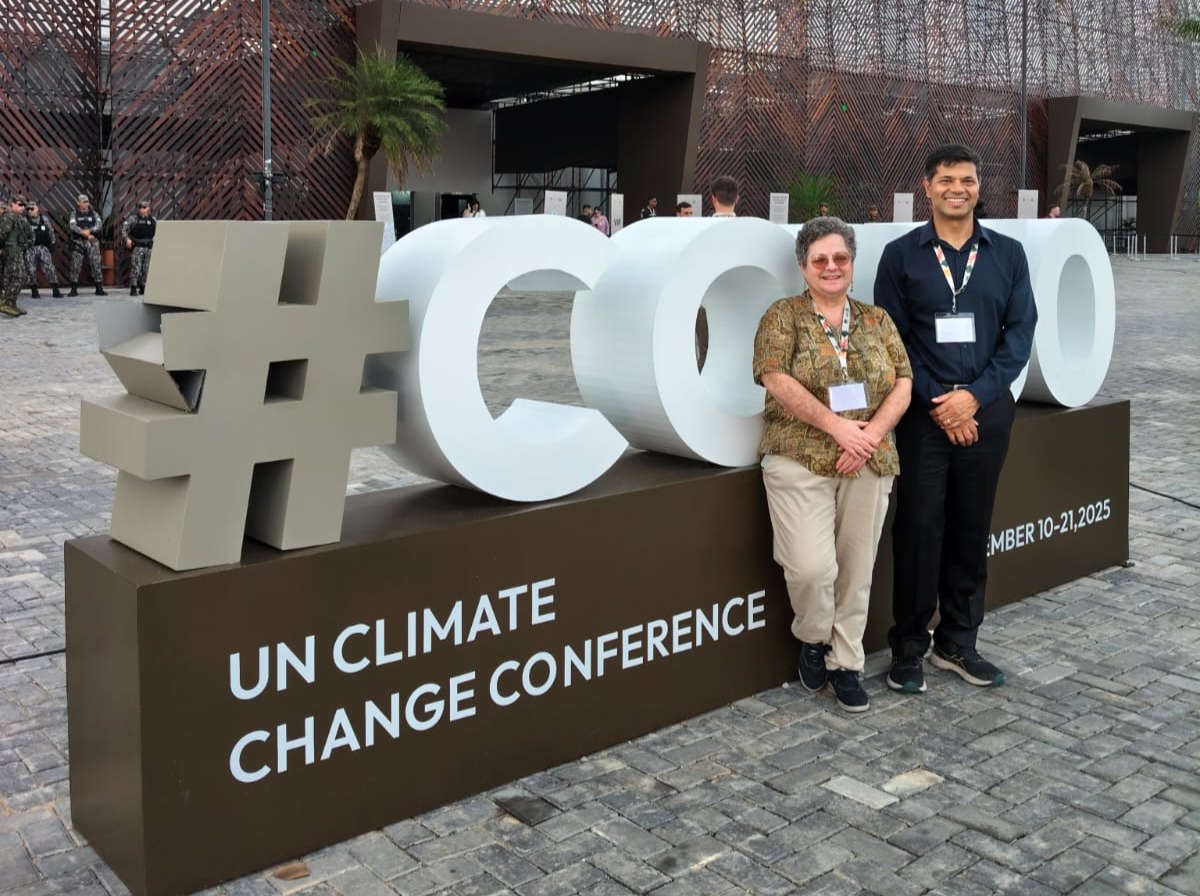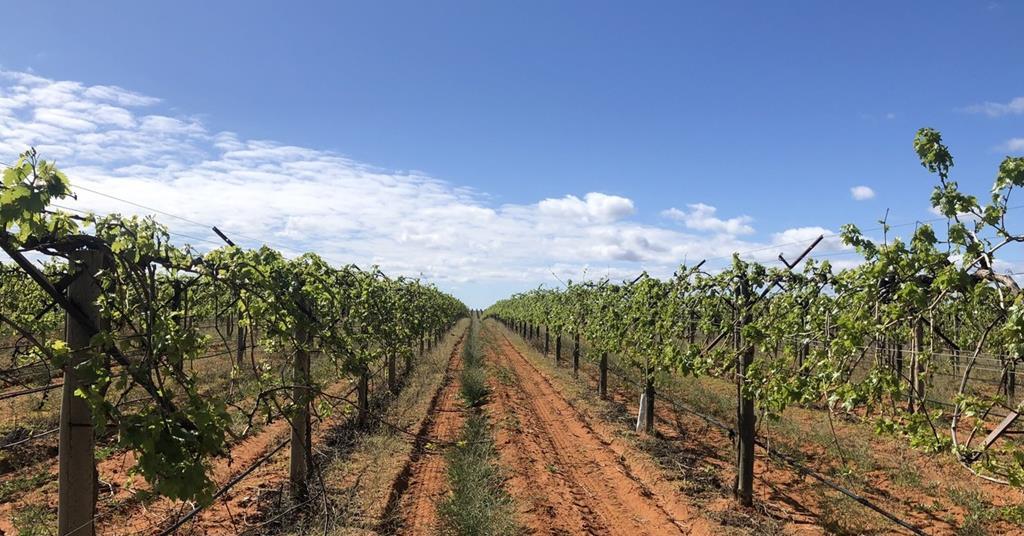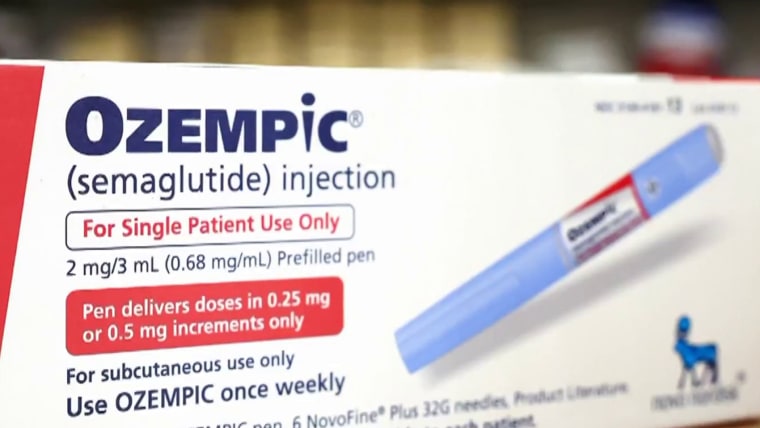Effect of water application on ammonia emissions from simulated beef cattle feedyard surfaces – Nature

Executive Summary: Evaluating Ammonia Mitigation in Livestock Operations for Sustainable Development
This report details an evaluation of water application as a strategy to mitigate ammonia (NH3) emissions from beef cattle feedyards, a critical issue impacting environmental sustainability and the achievement of several Sustainable Development Goals (SDGs). Ammonia emissions represent a significant loss of nutritional value in manure and contribute to air and water pollution, undermining SDG 2 (Zero Hunger), SDG 3 (Good Health and Well-being), SDG 6 (Clean Water), and SDG 15 (Life on Land). This study assessed the effectiveness of controlled water application on simulated feedyard surfaces under various environmental conditions. Results indicate that a single water application provides only a temporary mitigation effect of 4–25%. Emissions subsequently rebounded by 1–19% as the water evaporated, demonstrating that the practice primarily delays rather than permanently reduces total emissions. The findings suggest that for water application to be a viable component of sustainable livestock management (SDG 12: Responsible Consumption and Production), it must be combined with other strategies, such as repeated applications or chemical amendments. Further research is essential to optimize these methods and integrate them into a comprehensive strategy for reducing the environmental footprint of livestock operations.
1.0 Introduction: Aligning Agricultural Practices with Sustainable Development Goals
1.1 The Challenge of Ammonia Emissions in Livestock Production
Ammonia (NH3) emissions from agricultural sources, particularly Confined Animal Feeding Operations (CAFOs), present a significant challenge to sustainable development. These emissions have multifaceted negative impacts that directly conflict with the United Nations Sustainable Development Goals:
- SDG 2 (Zero Hunger) & SDG 12 (Responsible Consumption and Production): The loss of NH3 to the atmosphere reduces the nitrogen content and nutrient value of manure. This diminishes its effectiveness as a natural fertilizer, hindering efforts to create closed-loop, resource-efficient agricultural systems and promote sustainable food production.
- SDG 3 (Good Health and Well-being) & SDG 11 (Sustainable Cities and Communities): Atmospheric NH3 is a precursor to fine particulate matter (PM2.5), a major air pollutant linked to severe public health issues, including respiratory and cardiovascular diseases. Reducing these emissions is crucial for improving air quality and public health.
- SDG 6 (Clean Water and Sanitation), SDG 14 (Life Below Water), & SDG 15 (Life on Land): The deposition of atmospheric nitrogen contributes to the eutrophication of water bodies, nitrate contamination of groundwater, and acidification of soils. These effects disrupt aquatic and terrestrial ecosystems, threatening biodiversity and the health of our natural environments.
- SDG 13 (Climate Action): While not a primary greenhouse gas, NH3 plays a role in the nitrogen cycle, which can lead to the formation of nitrous oxide (N2O), a potent greenhouse gas. Managing nitrogen more effectively is a component of broader climate action strategies.
1.2 Water Application as a Mitigation Strategy: An SDG-Focused Inquiry
Sprinkler-based water application is an existing practice in feedyards, primarily used for dust control and heat stress reduction. Its potential as an NH3 mitigation strategy offers an opportunity to leverage current infrastructure for additional environmental benefits, aligning with SDG 12. However, previous research has yielded contradictory results on its effectiveness. This study was designed to clarify these inconsistencies and determine if water application can be considered a reliable Best Management Practice (BMP) for sustainable agriculture. The primary objectives were:
- To determine the NH3 mitigation potential of water application on simulated dry and wet beef manure surfaces.
- To evaluate the impact of key variables (water type, manure properties, moisture content, temperature) on mitigation effectiveness.
- To investigate strategies for sustained mitigation, including repeated water applications and the use of chemical amendments like aluminum sulfate (alum).
- To provide a scientific basis for developing practical, scalable mitigation strategies that support the environmental goals of the livestock industry.
2.0 Methodology: A Controlled Evaluation of Mitigation Strategies
2.1 Experimental Setup and Measurement
A controlled laboratory experiment was conducted to simulate feedyard surface conditions and measure NH3 emissions.
- Flux Chamber System: A specialized air-through flux chamber system was used to contain homogenized manure samples and measure gas flux. The system allowed for the control and monitoring of environmental conditions.
- Ammonia Measurement: A real-time, continuous measurement system equipped with electrochemical sensors was used to quantify NH3 concentrations in the headspace of the chambers.
- Manure Samples: Manure was collected from both a research feedyard (Texas) and a commercial feedyard (Colorado) to ensure the results were representative of different operational conditions.
2.2 Treatment Variables and Conditions
The study systematically evaluated several factors to understand their influence on NH3 mitigation:
- Surface Conditions:
- Dry Conditions: Manure only.
- Wet Conditions: Manure treated with synthetic urine to simulate fresh depositions.
- Water Application:
- Water Types: Deionized water, Texas groundwater, and Colorado groundwater were tested to assess the effect of water chemistry and pH.
- Coverage: Water was applied uniformly across the entire surface (SPKL) or partially to a specific area (SPOT).
- Environmental Factors:
- Manure Moisture Content: Three levels were tested (9%, 19%, and 35%).
- Air Temperature: Three controlled temperatures were used (9°C, 22°C, and 31°C).
- Enhanced Mitigation Strategies:
- Multiple Applications: Water was applied three times at 4-day intervals to test for sustained effects.
- Chemical Amendment: Aluminum sulfate (alum) was mixed with water at four different doses (100, 200, 450, and 900 g/m2) to evaluate its potential to enhance and prolong mitigation.
3.0 Results: Assessing the Efficacy of Water Application for Sustainable Ammonia Mitigation
3.1 Initial Mitigation and Long-Term Rebound Effect
A single application of water demonstrated a clear but temporary effect on NH3 emissions, highlighting a significant challenge for its use as a standalone sustainable practice.
- Temporary Reduction: Immediately following application, water significantly reduced NH3 flux by 4-25%. This initial effect supports short-term air quality goals (SDG 3, SDG 11).
- Emission Rebound: As the applied water evaporated over subsequent days, NH3 emissions rebounded, increasing by 1-19% relative to the control group.
- Net Effect: Over a 12-day period, the cumulative NH3 emissions from water-treated surfaces were not significantly different from untreated surfaces. This indicates that water application merely delays volatilization rather than preventing it, failing to provide a long-term solution for nutrient retention (SDG 2) or pollution prevention (SDG 6, SDG 15).
3.2 Influence of Environmental and Application Factors
The effectiveness of water application was highly dependent on specific conditions, which is critical for developing effective management practices under SDG 12.
- Temperature: Mitigation was most effective at lower temperatures. At 9°C, a sustained reduction of 23% was observed. At 31°C, the mitigation effect was minimal and short-lived, quickly followed by an increase in emissions.
- Manure Moisture: Optimal mitigation was observed at moderate manure moisture content (19-35%). Very dry manure (9% moisture) showed a weak and transient reduction, followed by a trend of increasing emissions.
- Application Coverage: Uniform water application covering the entire manure surface was significantly more effective and sustained than partial (spot) application. Partial coverage led to a rapid loss of the mitigation effect and, in some cases, exacerbated emissions.
- Manure and Water Source: No significant differences in mitigation were observed based on the source of manure or the type of groundwater used, suggesting the physical presence of water is the dominant factor over its specific chemical properties in this context.
3.3 Strategies for Enhanced and Sustained Mitigation
To overcome the limitations of a single water application, two enhancement strategies were tested, showing pathways toward more responsible and effective production systems (SDG 12).
- Multiple Water Applications: Repeatedly applying water at 4-day intervals sustained the mitigation effect over the 12-day experiment. Each subsequent application enhanced the reduction, achieving a consistent mitigation of 12-17%. This method offers a viable strategy for temporary, targeted emission control.
- Water with Aluminum Sulfate (Alum): The addition of alum to the water provided the most effective and durable mitigation.
- A strong, dose-dependent reduction in NH3 flux was observed, with higher alum concentrations leading to greater mitigation (R2=0.89).
- Unlike water-only treatments, the alum-water mixture prevented the rebound of NH3 emissions, providing sustained suppression for the entire 14-day observation period.
- This approach demonstrates a promising technology for achieving significant, long-term reductions in ammonia pollution, directly supporting multiple environmental SDGs.
4.0 Discussion: Implications for Sustainable Livestock Management
4.1 Reconciling Water Application’s Role in SDG Achievement
The findings clarify the role of water application in the context of sustainable agriculture. As a standalone strategy, its utility for long-term NH3 mitigation is limited due to the emission rebound effect. It does not permanently reduce the loss of nitrogen from the agricultural system (a challenge for SDG 2 and SDG 12) nor does it offer a lasting solution to air and water pollution (SDG 3, 6, 11, 14, 15). However, when viewed as a component of a broader management system, its potential becomes more apparent.
- As a Temporary Control Measure: Repeated water applications can be a practical tool for short-term emission suppression, for example, during periods of high pollution risk or to comply with local air quality regulations.
- As a Delivery Mechanism: The most significant potential for water application lies in its use as a vehicle for delivering chemical amendments like alum. This approach transforms a practice with temporary benefits into a powerful and sustained mitigation strategy, creating a direct pathway to achieving environmental sustainability goals in livestock production.
4.2 Limitations and Directions for Future Research
To translate these findings into effective, on-farm practices, further research is needed to address the study’s limitations and explore practical applications.
- Field-Scale Validation: The controlled conditions of this study must be validated in real-world feedyard environments, which feature continuous manure deposition, variable airflow, and surface compaction from livestock.
- Optimization of Application: Future work should focus on optimizing the dose, frequency, and method of water application to maximize mitigation while conserving water resources, a key consideration for SDG 6.
- Environmental Impact of Amendments: While alum is effective, its long-term impact on soil health, crop production, and potential for other emissions (e.g., hydrogen sulfide) must be thoroughly evaluated to ensure it represents a net environmental benefit. Alternatives such as calcium or iron sulfate should also be investigated.
5.0 Conclusion and Recommendations for Sustainable Agriculture
This study concludes that a single water application is insufficient for long-term ammonia mitigation from beef feedyard surfaces, as it primarily delays emissions rather than reducing them. The effectiveness of this practice is highly dependent on environmental conditions, particularly temperature and manure moisture.
To advance toward achieving the Sustainable Development Goals, particularly those related to responsible production, environmental health, and food security, the following recommendations are proposed:
- Adopt Integrated Strategies: Livestock operations should move beyond single-solution approaches. Water application should be integrated with other proven strategies, such as the use of chemical amendments.
- Leverage Existing Infrastructure: The use of existing sprinkler systems to apply water-soluble amendments like alum offers a cost-effective and scalable method for achieving significant and sustained NH3 emission reductions.
- Promote Further Research and Development: Continued investment in research is critical to optimize mitigation techniques, evaluate their long-term ecological impacts, and develop comprehensive Best Management Practices that are both environmentally effective and economically viable for producers.
By optimizing and enhancing water-based strategies, the livestock industry can make significant strides in reducing its environmental footprint, thereby contributing positively to global sustainability targets.
Analysis of Sustainable Development Goals (SDGs) in the Article
1. Which SDGs are addressed or connected to the issues highlighted in the article?
The article on ammonia (NH3) emissions from beef cattle feedyards and mitigation strategies connects to several Sustainable Development Goals (SDGs) by addressing the environmental, health, and agricultural sustainability challenges posed by intensive livestock farming.
- SDG 2: Zero Hunger: The article directly relates to sustainable agriculture. It opens by stating that mitigating NH3 emissions “helps sustain and promote the production of environmental agriculture.” This aligns with the goal of ensuring sustainable food production systems. The research aims to find “best management practices” (BMPs) for beef feedyards, which are a critical part of the global food supply chain.
- SDG 3: Good Health and Well-being: The article explicitly links ammonia emissions to negative health outcomes, noting that they contribute to “fine particulate matter (PM) formation, impaired air quality and visibility, [and] public health issues.” By studying methods to reduce these emissions, the research contributes to reducing the health risks associated with air pollution from agricultural sources.
- SDG 6: Clean Water and Sanitation: The environmental impact of ammonia on water resources is a key theme. The article states that NH3 deposition can lead to “ecosystem eutrophication” and “nitrate contamination,” both of which degrade water quality in freshwater ecosystems. The study’s focus on mitigating ammonia release helps protect water resources from agricultural pollution.
- SDG 12: Responsible Consumption and Production: The research is centered on making beef production more sustainable. It addresses the management of waste (manure) from “Confined animal feeding operations (CAFOs)” and the reduction of pollution (NH3 emissions). This aligns with the goal of achieving environmentally sound management of wastes and reducing their release into the air, water, and soil.
- SDG 13: Climate Action: Although the primary focus is on ammonia, the article mentions that its deposition can lead to “nitrous oxide (N2O) formation.” Since N2O is a potent greenhouse gas, strategies to mitigate ammonia emissions can have co-benefits for climate action by reducing indirect N2O emissions from agricultural systems.
- SDG 15: Life on Land: The article highlights the detrimental effects of ammonia emissions on terrestrial ecosystems. It mentions that deposition contributes to “ecosystem eutrophication” and “soil acidity,” which directly harm biodiversity and soil health. The research into emission mitigation is therefore relevant to protecting and restoring life on land.
2. What specific targets under those SDGs can be identified based on the article’s content?
Based on the issues discussed, several specific SDG targets can be identified:
- Target 2.4: “By 2030, ensure sustainable food production systems and implement resilient agricultural practices that increase productivity and production, that help maintain ecosystems… and that progressively improve land and soil quality.” The article’s entire premise is to find effective NH3 mitigation strategies to achieve “sustainable and environmental agriculture production,” directly supporting this target by seeking to reduce the negative environmental footprint of beef production.
- Target 3.9: “By 2030, substantially reduce the number of deaths and illnesses from hazardous chemicals and air, water and soil pollution and contamination.” The research addresses this target by investigating methods to reduce ammonia emissions, which are linked to “impaired air quality” and “public health issues” through the formation of fine particulate matter.
- Target 6.3: “By 2030, improve water quality by reducing pollution… and minimizing release of hazardous chemicals and materials…” The study’s goal of mitigating ammonia emissions directly contributes to this target, as the article identifies ammonia deposition as a source of “nitrate contamination” and “ecosystem eutrophication” in water bodies.
- Target 12.4: “By 2020, achieve the environmentally sound management of chemicals and all wastes… and significantly reduce their release to air, water and soil in order to minimize their adverse impacts on human health and the environment.” The article focuses on managing manure (a waste product) and its subsequent ammonia emissions (a release to air). The evaluation of water application and chemical amendments like alum are examples of seeking environmentally sound management practices.
- Target 15.3: “By 2030, combat desertification, restore degraded land and soil, including land affected by… pollution, and strive to achieve a land degradation-neutral world.” By addressing ammonia deposition that leads to “soil acidity,” the research contributes to efforts to prevent land degradation caused by agricultural pollution.
3. Are there any indicators mentioned or implied in the article that can be used to measure progress towards the identified targets?
Yes, the article mentions and uses several quantitative indicators that can be used to measure progress towards the identified targets. These are central to its experimental methodology.
- Ammonia (NH3) Flux (mg/m²/min): This is the primary indicator used throughout the study to quantify the rate of ammonia emissions from manure surfaces. It directly measures the release of the pollutant into the atmosphere, making it a key metric for tracking progress on targets related to air pollution (Targets 3.9, 12.4). The article details how this is calculated using Equation 3: Flux = (C × Q) / A.
- Percentage Mitigation of NH3 Emissions: The study consistently reports the effectiveness of different treatments as a percentage reduction in ammonia flux. For example, it found that “water applications provided only a temporary mitigation effect (4–25%)” and that this effect rebounded over time (“1–19%”). This indicator directly measures the success of interventions aimed at achieving sustainable agricultural practices (Target 2.4) and pollution reduction (Targets 6.3, 12.4).
- Ammonia (NH3) Concentration (ppmv): Before calculating flux, the study measures the concentration of ammonia in the air within the flux chambers. This is a direct indicator of air quality at the source and is relevant for assessing health impacts (Target 3.9).
- Manure and Water Physicochemical Properties: The study analyzes properties like manure moisture content, pH, and ammonium-N concentration. These are underlying factors that influence emission rates. For instance, the article notes that “low manure MC and high air temperatures typically reduce the effectiveness of NH3 suppression.” Monitoring these properties can serve as an indirect indicator of emission potential and help in implementing effective management practices (Target 2.4).
- Environmental Conditions (Temperature and Humidity): The study controls and measures temperature and humidity, demonstrating their significant impact on emission rates. The article concludes that “the effectiveness of NH3 emission mitigation through water application is highly sensitive to temperature.” These environmental variables are crucial co-indicators for assessing and predicting pollution levels.
4. Summary Table of SDGs, Targets, and Indicators
| SDGs | Targets | Indicators Identified in the Article |
|---|---|---|
| SDG 2: Zero Hunger | 2.4: Ensure sustainable food production systems and resilient agricultural practices. |
|
| SDG 3: Good Health and Well-being | 3.9: Substantially reduce deaths and illnesses from air, water, and soil pollution. |
|
| SDG 6: Clean Water and Sanitation | 6.3: Improve water quality by reducing pollution. |
|
| SDG 12: Responsible Consumption and Production | 12.4: Achieve environmentally sound management of wastes and reduce their release to air, water, and soil. |
|
| SDG 13: Climate Action | 13.2: Integrate climate change measures into policies and planning. |
|
| SDG 15: Life on Land | 15.3: Combat desertification and restore degraded land and soil. |
|
Source: nature.com
What is Your Reaction?
 Like
0
Like
0
 Dislike
0
Dislike
0
 Love
0
Love
0
 Funny
0
Funny
0
 Angry
0
Angry
0
 Sad
0
Sad
0
 Wow
0
Wow
0



















































.jpg.webp?itok=0ZsAnae9#)


























